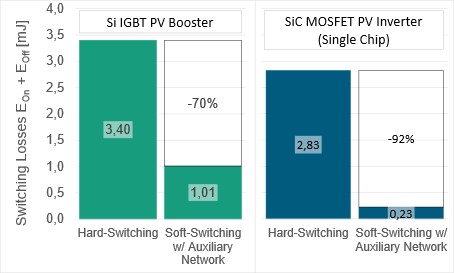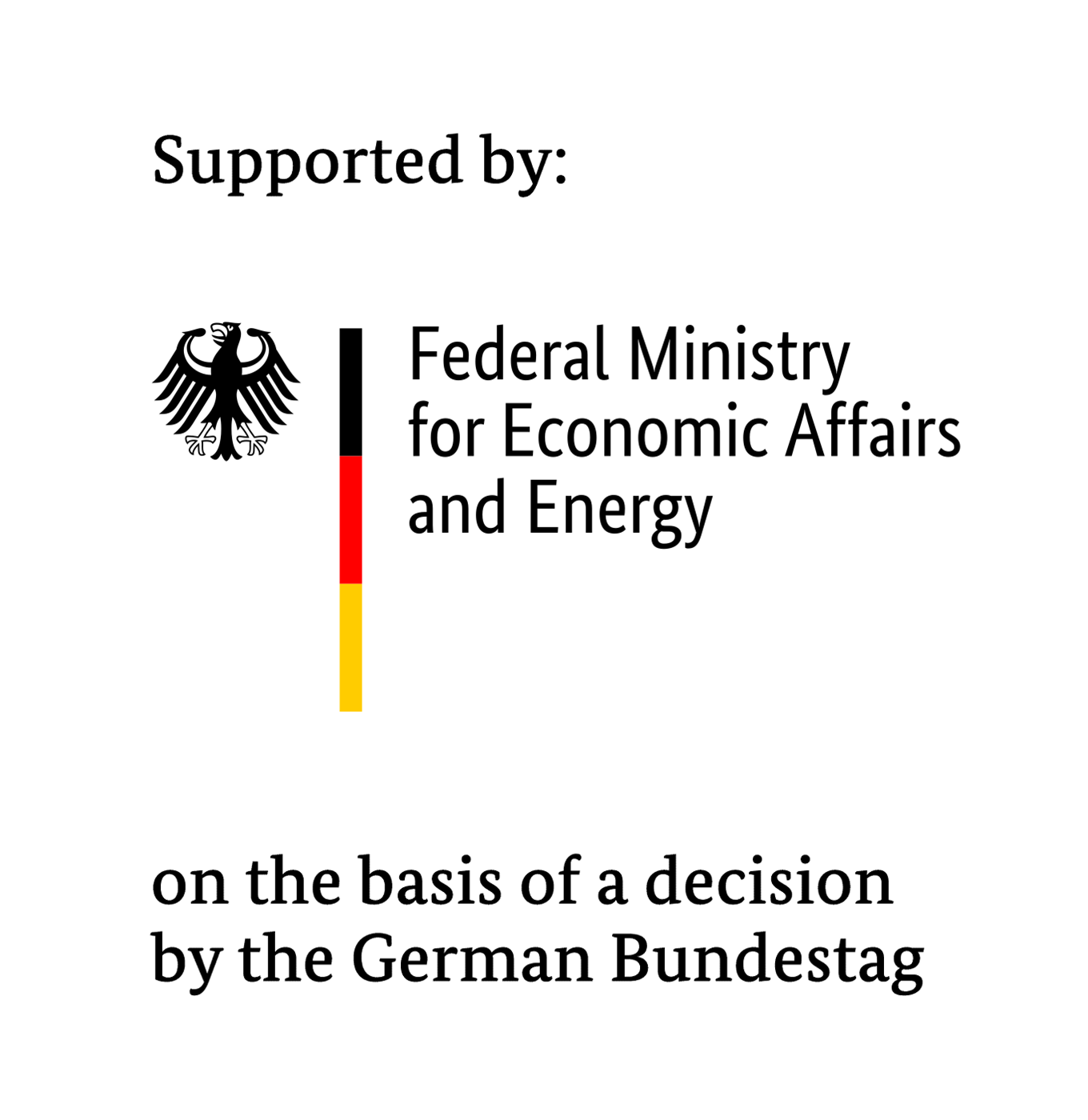Photovoltaic Converters: Reducing Size, Weight and Cost through Higher Switching Frequencies and Lower Losses
Within the Research Project “PV-MoVe”, researchers at the Fraunhofer Institute for Energy Economics and Energy System Technologies IEE investigated how to use active switching loss reduction networks for power semi-conductors to enable smaller, more lightweight, and more cost-efficient photovoltaic converters. Using newly developed additional circuitry, switching frequencies for a 50 kW PV inverter could be increased by a factor of 2.5 – 3 for the DC input stage and by a factor of 10 – 12.5 for the inverter output stage. The project was worked on in cooperation with project part-ners Infineon Technologies AG and SUMIDA Components & Modules GmbH from 2019 to 2023, funded by the German Federal Ministry of Economic Affairs and Climate Action BMWK.

The main goal of the project titled “Methods, Procedures and Components to Reduce Switching Losses in Fast-Switching PV Converters for targeted Weight and Cost Reduction” was to reduce switching losses in power semiconductors to enable higher switching frequencies. This enables opportunities to manufacture PV converters smaller, more lightweight, and more cost effective without impeding their efficiency significantly.
“Higher switching frequencies for power semiconductors can be used to shrink the dominant contributors regarding weight and size, i.e. power inductors and capacitors, with reduced raw materials and supplies. This reduces both material consumption and component costs, leading to additional benefits regarding cooler and case design”, says Prof. Dr. Marco Jung. The expert for power electronics is head of the Converters and Drive Technology Department at Fraunhofer IEE as well as a Full Professor at the Bonn-Rhein-Sieg University of Applied Sciences.
The project PV-MoVe focused on the use of additional circuits to reduce switching losses, since these technologies can be applied independently of the base material of power semiconductors. “They can be used for well-established Silicon (Si)-Technologies to enable high switching frequencies usually only achievable with Wide Band Gap (WBG) semiconductors, such as Silicon Carbide (SiC) or Gallium Nitride (GaN), yet they can also be used to increase their already high switching frequencies even further”, explains Fraunhofer IEE Project Coordinator Dr. Sebastian Sprunck. Such additional circuits consist of specialized combinations of auxiliary power semiconductors, resonance capacitors and inductors. They reduce the voltage and/or current stresses on the main power semiconductor during its switching transitions, leading to “soft” turn-on and turn-off with drastically reduced switching losses.
To demonstrate the effectiveness of this approach, suitable circuits for the partial systems of a 50 kW PV converter, i.e. a DC/DC input boost converter and the output inverter, have been developed, constructed and thoroughly tested in a laboratory environment. “The results clearly demonstrate that a significant reduction of the main power semiconductors’ switching losses is possible: For the Si-based IGBT of the boost converter up to -70 % and for the SiC-based MOSFET of the inverter up to -92 %”, Sprunck highlights.
The necessary additional circuits do cause losses themselves, yet presumably not more than the losses reduced in the main power semiconductors. For those, the loss reduction can be used to significantly increase the switching frequencies without risking thermal overload. “Based on our calculations, the switching frequency for the investigated 50 kW IGBT PV boost converter can be increased from 6.6 kHz by a factor of 2.5 – 3. For the corresponding SiC ANPC PV inverter, an increase from 36.6 kHz by a factor of 10 – 12.5 seems possible”, the experts conclude.
The Fraunhofer scientists are now working on integrating the newly developed technologies into a full system demonstrator to validate their effectiveness under real-life conditions as well as on transferring them to further applications, e.g. battery, drive of fuel cell converters.
The project PV-MoVe was funded by the German Federal Ministry of Economic Affairs and Climate Action BMWK between 2019 and 2023 with a total funding of 2.8 mill. €.
Last modified:
